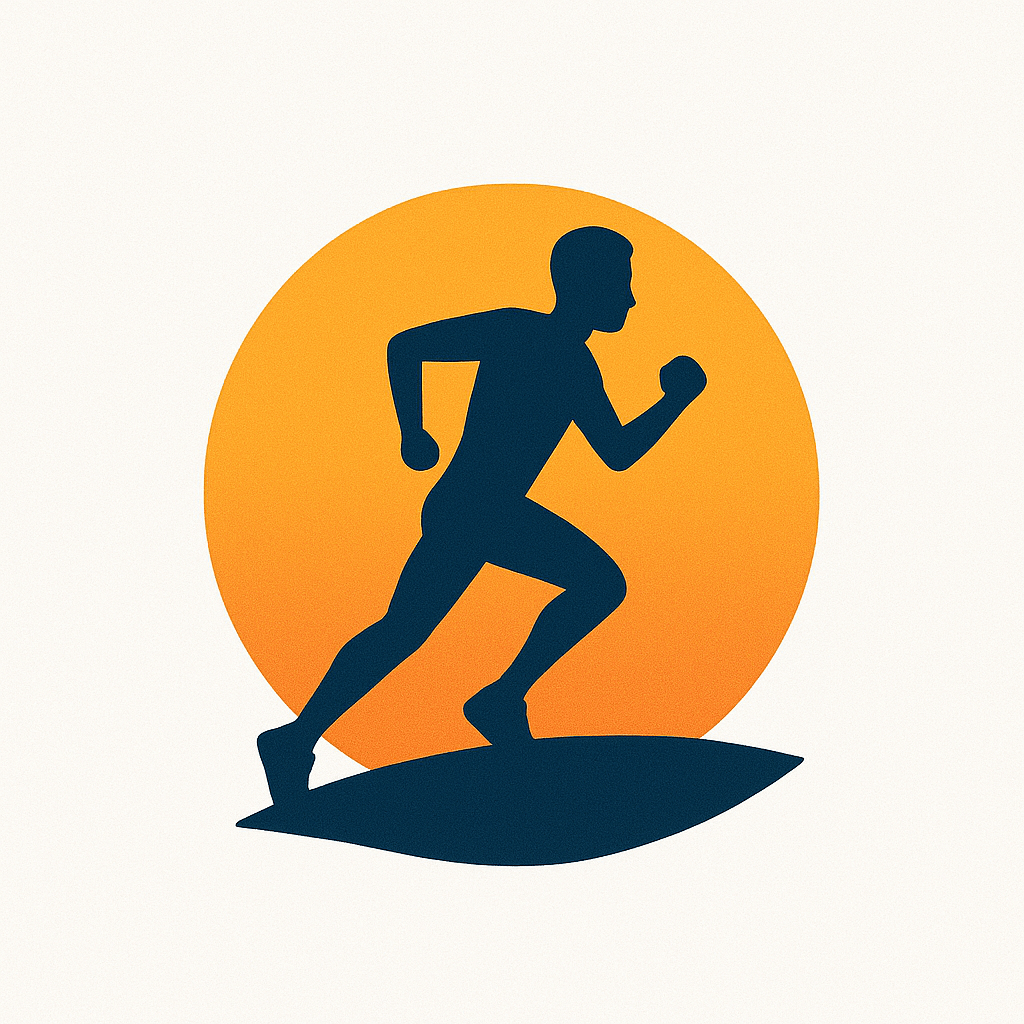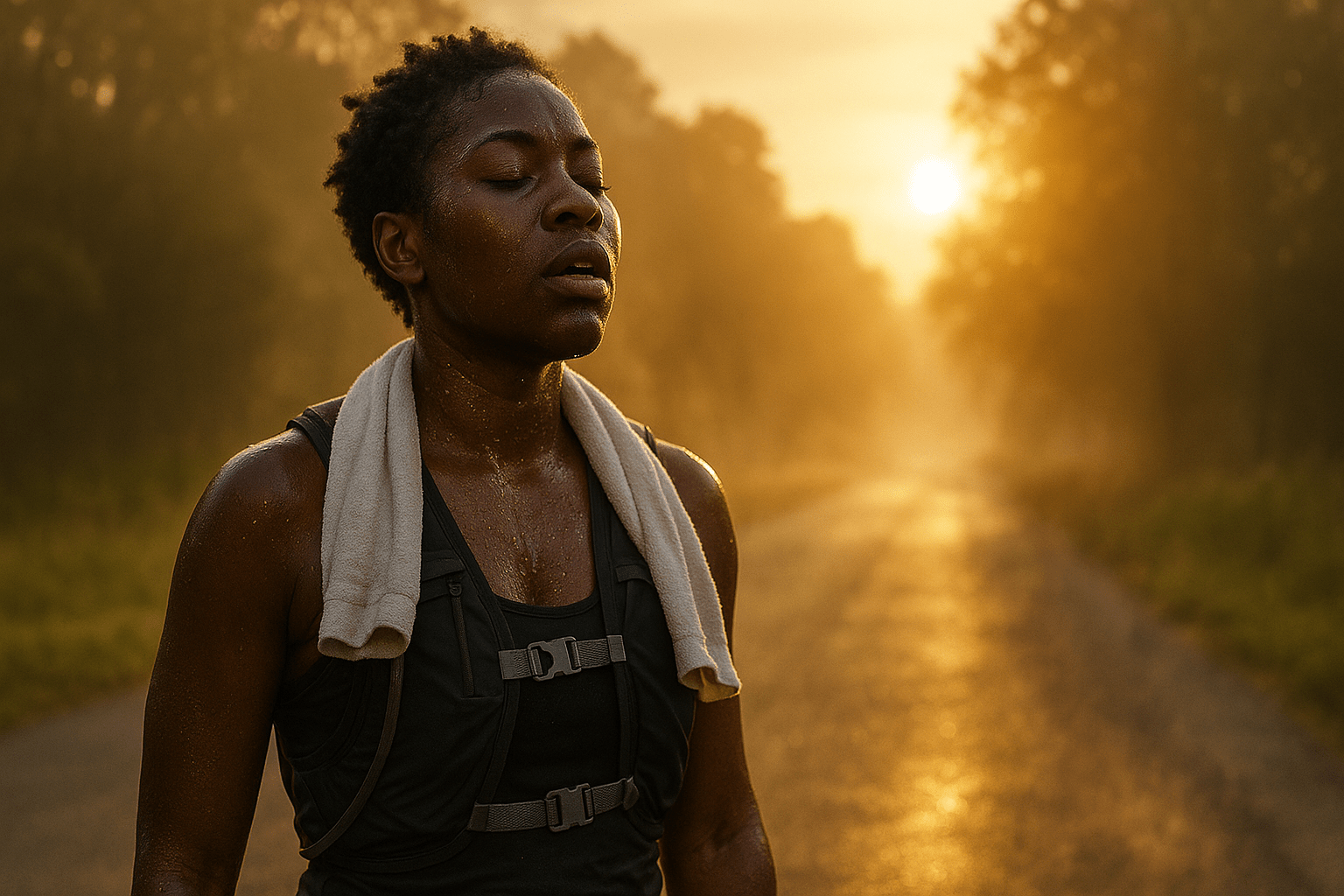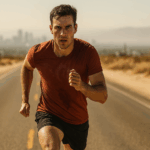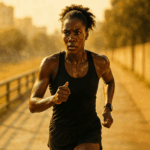Training When the Heat Is On
Your alarm buzzes before dawn. The air already feels thick, heavy with humidity. You lace up anyway—because you’ve got a race on the calendar. Maybe it’s your first 10K, a long-awaited half marathon, or a return to racing after time off. Summer training isn’t optional.
But let’s be honest: running through a heatwave can feel brutal. Training smart in hot weather isn’t just about finishing your plan—it’s about protecting your body, maintaining consistency, and arriving at race day strong and safe.
With the right approach, you can beat the heat, build resilience, and train confidently through the hottest months of the year.
Why Summer Race Training Demands a Smarter Approach
The Physiology of Heat During Endurance Training
When you run in high temperatures, your body diverts blood to the skin to help cool you down. This limits blood flow to muscles, increases your heart rate, and can leave you feeling more fatigued—even at paces that usually feel easy.
Your core temperature rises faster in the heat. You sweat more, and if you’re not properly replacing fluids and electrolytes, you start flirting with dehydration, muscle cramps, or worse—heat exhaustion.
Risks of Ignoring the Heat
Ignoring hot weather signals can lead to:
- Heat cramps (especially in calves or hamstrings)
- Heat exhaustion (dizziness, nausea, fatigue)
- Heatstroke (a medical emergency)
- Overtraining and burnout from forcing through tough conditions
A smarter summer plan can help you avoid all of these—and keep your training consistent and productive.
Strategic Timing and Route Planning
Best Times of Day to Train in Summer
The coolest times of day are your best allies:
- Early morning (before 8:00 AM): Typically the coolest, lowest UV index, and less air pollution.
- Evening (after 7:00 PM): Cooler than midday, but potentially still humid.
Choose your time based on your personal rhythms—some runners feel stronger in the evening—but always prioritize lower temps and shade.
Choosing Shaded, Breezy Routes
Avoid open pavement and concrete jungles. Instead, look for:
- Tree-lined trails
- Parks with shade loops
- Neighborhoods with canopy cover
- Paths near water (cooler and sometimes breezier)
Apps like AllTrails or Komoot can help you scout shaded or wooded routes near you.
Adjusting Training Intensity and Expectations
Embracing the Heat Adjustment Period
Acclimation to heat takes time—typically 7 to 14 days of consistent exposure.
During this time:
- Run slower and shorter than normal
- Monitor your effort level instead of pace
- Hydrate aggressively before, during, and after
This period builds cardiovascular efficiency and sweat rate adaptation—but only if you ease into it.
Modifying Speed, Volume, and Recovery
Heat training is not the time for all-out sprints or huge mileage jumps.
Smart adjustments include:
- Lowering intensity on hard days
- Spacing out long runs
- Taking extra recovery days
- Monitoring heart rate (elevated HR = time to back off)
Give yourself grace: training in heat builds toughness, even at slower paces.
Gear and Hydration: Your Cooling Toolkit
Clothing and Accessories to Stay Cool
What you wear can make or break your summer runs:
- Moisture-wicking, light-colored fabrics
- Mesh-back hats or visors for sun protection + airflow
- Sunglasses with UV protection to reduce squinting and fatigue
- Sweat-wicking headbands to stop drips
Avoid cotton at all costs—it soaks, sticks, and overheats.
Hydration Plans for Long Runs
Hydration isn’t just about drinking—it’s about timing and quality.
- Pre-run: 8–16 oz of water + electrolytes 30–60 mins before
- During run: Sip water every 15–20 minutes; use electrolyte tabs or drinks for runs over 45 mins
- Post-run: Rehydrate with electrolytes (not just plain water) to replenish sodium
Try handheld bottles, hydration belts, or vests depending on your mileage.
Cooling Tools and Mid-Run Hacks
Small gear, big difference:
- Cooling towels or buffs around the neck
- Ice bandanas pre-frozen and tied at the neck
- Misting water bottles to spritz face/arms mid-run
- Cold sponge stashes on longer loops or races
If it’s a loop route, stash a frozen bottle in the bushes for lap 2. Pro move.
Race-Day Simulation Without the Risk
How to Safely Replicate Race Conditions
You don’t have to run your hardest efforts in the hottest weather.
Try this:
- Do dress rehearsals at moderate paces wearing your full race outfit and gear
- Practice fueling and hydration with the exact products you’ll use on race day
- Use controlled heat exposure like treadmill runs in warmer rooms for short durations
Simulating conditions helps your body adapt—but never simulate danger.
When and How to Use Treadmills and Indoor Alternatives
On triple-digit days or poor air quality alerts, go inside.
- Treadmill workouts can still build stamina and speed
- Use intervals, hills, or progressive pacing to mimic outdoor challenges
- Keep a fan nearby and hydrate as if you’re outside
Cross-training (bike, pool, elliptical) can also help reduce heat load while maintaining fitness.
Outrun the Heat, Outlast the Competition
Summer training is about balance. You’re building endurance and heat resilience—not proving toughness at all costs.
Listen to your body. Respect the elements. And trust that every smart, sweaty mile you log in July will carry you to a stronger finish line come race day.
Remember: it’s not about running through fire—it’s about mastering it.






Leave a Reply